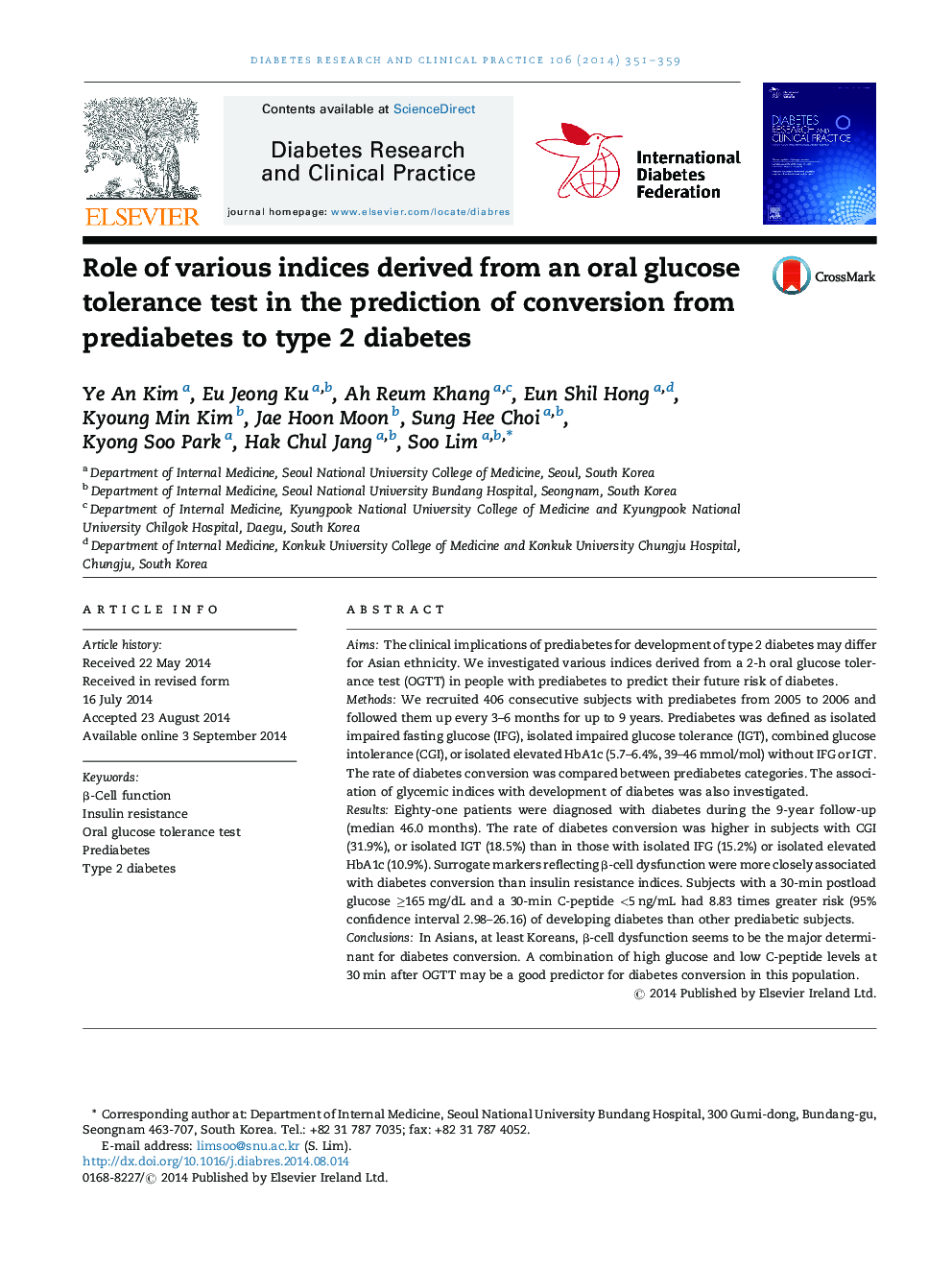| Article ID | Journal | Published Year | Pages | File Type |
|---|---|---|---|---|
| 5899699 | Diabetes Research and Clinical Practice | 2014 | 9 Pages |
AimsThe clinical implications of prediabetes for development of type 2 diabetes may differ for Asian ethnicity. We investigated various indices derived from a 2-h oral glucose tolerance test (OGTT) in people with prediabetes to predict their future risk of diabetes.MethodsWe recruited 406 consecutive subjects with prediabetes from 2005 to 2006 and followed them up every 3-6 months for up to 9 years. Prediabetes was defined as isolated impaired fasting glucose (IFG), isolated impaired glucose tolerance (IGT), combined glucose intolerance (CGI), or isolated elevated HbA1c (5.7-6.4%, 39-46 mmol/mol) without IFG or IGT. The rate of diabetes conversion was compared between prediabetes categories. The association of glycemic indices with development of diabetes was also investigated.ResultsEighty-one patients were diagnosed with diabetes during the 9-year follow-up (median 46.0 months). The rate of diabetes conversion was higher in subjects with CGI (31.9%), or isolated IGT (18.5%) than in those with isolated IFG (15.2%) or isolated elevated HbA1c (10.9%). Surrogate markers reflecting β-cell dysfunction were more closely associated with diabetes conversion than insulin resistance indices. Subjects with a 30-min postload glucose â¥165 mg/dL and a 30-min C-peptide <5 ng/mL had 8.83 times greater risk (95% confidence interval 2.98-26.16) of developing diabetes than other prediabetic subjects.ConclusionsIn Asians, at least Koreans, β-cell dysfunction seems to be the major determinant for diabetes conversion. A combination of high glucose and low C-peptide levels at 30 min after OGTT may be a good predictor for diabetes conversion in this population.
